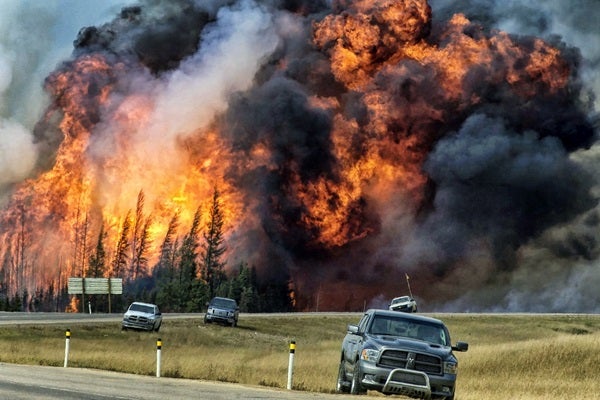In the 1950s, atmospheric scientist Ed Lorenz was using the rapidly growing power of digital computers to try to forecast the weather. What he discovered was that if he changed the way he set up a model by even the tiniest amount, the model would diverge exponentially until it bore no resemblance to the previous result.
Lorenz named this phenomenon “chaos.” But after his 1972 paper, “Predictability: Does the flap of a butterfly’s wings in Brazil set off a tornado in Texas?”, chaos got a new name. The “butterfly effect” was born.
The thing about chaos is that we just have to live with it. Don’t get annoyed at meteorologists when your weekend plans are ruined by unexpected rain. It’s not their fault. They have sound theories, good data, and some of the best computers on the planet. But weather is chaotic, which means that even if they do everything right, there’s a good chance that Thursday’s prediction will get Saturday wrong.
As goes weather, so goes climate. It hardly seems like a big deal if the ocean is a tiny bit warmer along a narrow strip of the eastern equatorial Pacific. But Earth’s climate is chaotic, and the planet notices this El Niño warming. That strip of warmer water strengthens atmospheric convection. Wind patterns change. Shifting global circulation interacts with continents, mountain ranges, and ocean currents in new ways. Weather patterns shift radically across the globe.
Before you know it, droughts, floods, and consecutive hottest years on record cause crop failures the world over. The economic impacts reach many billions of dollars. The human impacts are worse, as disease spreads and tens of millions of people face food and water shortages. Political unrest topples nations. Can we truly point to a patch of warm water as the cause? Can we prove that it’s not?
An El Niño like that of 2015 and 2016 is a really cool example of chaos!
Well, OK. Maybe it’s not so cool if you care about things like how civilization is getting along or how many people are going to starve this year. But the fact that you can change things by a tiny amount and create such havoc is undeniably fascinating.
One thing about El Niño is that you really can’t plan for it, even if you know that it’s coming. If that patch of warm water shows up a few kilometers this way or that, or appears in July instead of June, everything changes.
Again, weather and climate are good examples. As Earth follows its orbit around the Sun and the seasons change, Earth’s climate responds to the changing thermal balance. As Earth approaches the summer solstice, it is hotter in the Northern Hemisphere and cooler in the South. Jet streams shift. Monsoons come to India. Higher ocean temperatures in the subtropical North Atlantic fuel tropical storms.
Those are testable predictions of climate models.
What you can’t do is reliably predict when storms will occur or exactly how much rain will fall. Models might predict July temperatures, but if a heat wave fails to materialize, that doesn’t mean that the models are wrong.
As science concerns itself more and more with the study of complex processes, the difference between predictions and falsifiable predictions will become more and more important.
When it comes to climate chaos, the object lesson from El Niño is simple. Sometimes you don’t have to tickle the Earth system much for all manner of change to break loose.
Which brings us to climate change. What can we say about climate change, and what is unpredictable, even in principle? As I’ve written before, the physics of global warming is dead simple. More carbon dioxide in the atmosphere changes Earth’s thermal balance. From decade to decade, the temperatures of the ocean and atmosphere are climbing. There is more water vapor in the air to power extreme weather. As ice cover decreases, the dark exposed waters of the Arctic Ocean absorb more heat from the Sun, changing weather patterns in the North.
Those are all testable predictions that climate models get right. But as for the chaos that follows, that is impossible to predict, or to plan for. If increasing the temperature of a small part of the Pacific by a couple of degrees can create global havoc, what might happen if we change the temperature of the whole planet by that much or more?
All that we can say for certain is that change is coming, and we’d better hold onto our hats!











